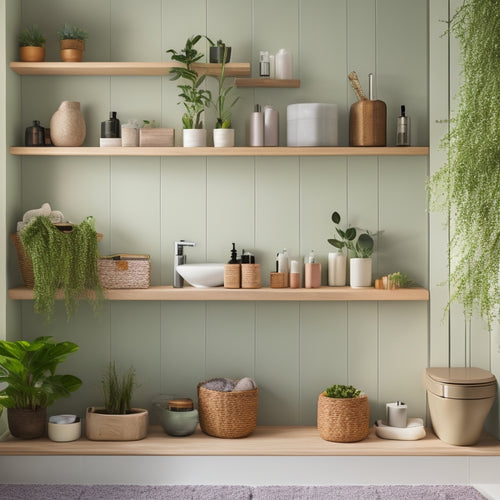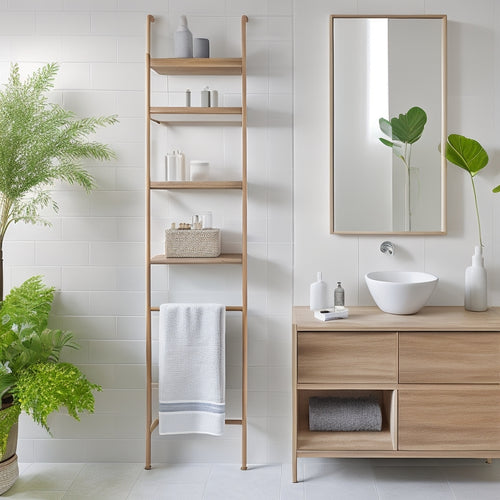
Create Stunning Botanical Prints With Ease
Share
With a few simple yet intentional steps, I can transform a blank gel press printing plate into a stunning botanical print that celebrates the beauty of nature. I start by gathering essential materials, including a gel press plate, vibrant acrylic paints, and a variety of fresh greenery. Next, I prepare the plate with a mix of textures and hues, carefully applying paint to create depth. Then, I arrange my botanical design, selecting and mixing colors to bring my vision to life. By layering paint and greenery, I achieve harmony and dimension. Now, I'm ready to add the final flourishes and let my print bloom - and there's still so much more to uncover.
Key Takeaways
• Start with a clean and dry gel press printing plate as the foundation for your botanical print.
• Arrange fresh greenery meticulously to create a stunning design, mixing and matching plants for visual harmony.
• Build up layers of paint and greenery, exploring color combinations and adding texture for dimension and depth.
• Balance bold and subtle elements, incorporating leaves, stems, and flowers to create a visually appealing print.
• Add deliberate imperfections and distress edges to give your print an organic, elegant finish.
Gathering Essential Materials
I gather my essential materials, starting with a gel press printing plate, which serves as the foundation for my botanical print, alongside acrylic paint in a range of vibrant colors and a variety of greenery, from delicate leaves to lush flowers, to create a visually striking piece of art.
Choosing the right greenery is important, so I select a mix of textures and hues to add depth and interest.
I set up my workspace, organizing my supplies within easy reach. My gel press printing plate takes center stage, surrounded by paints, brushes, and an assortment of leaves and flowers.
With all my materials at the ready, I'm excited to begin creating my botanical masterpiece.
Preparing the Printing Plate
With the gel press printing plate clean and dry, I squeeze a small amount of vibrant acrylic paint onto its surface. I'm excited to start experimenting with colors and mixing patterns to create a unique botanical print.
Next, I select a texture to add depth to my design - perhaps a piece of cardboard or a leaf-shaped stamp. Applying paint to the texture, I carefully lay it onto the printing plate, making sure to cover the entire surface. I love the unpredictability of this process, as the resulting pattern is always a surprise.
Now, my printing plate is ready for the next step - creating the botanical design that will bring my print to life.
Creating the Botanical Design
Vibrant colors and organic textures converge as I arrange a selection of fresh greenery, carefully choosing each stem and leaf to bring a touch of nature's beauty to my botanical print.
I'm meticulous in my plant arrangement, ensuring each element complements the others to create a visually stunning design.
Next, I turn my attention to paint selection, mixing colors to achieve the perfect hues that will bring my botanical print to life. I opt for a palette that's both bold and delicate, allowing the natural beauty of the greenery to shine through.
With my design and colors in place, I'm ready to bring my vision to life on the printing plate.
Building Up the Print Layers
By carefully layering paint and greenery, I build up the print layers, allowing each element to meld together in harmony. I start by exploring color combinations, selecting hues that will complement each other and create a visually appealing contrast.
Adding texture is key, as it adds dimension to the print. I achieve this by incorporating different materials, such as leaves, stems, and flowers, which create unique patterns and shapes. My layering techniques involve building up layers of paint, allowing each layer to dry before adding the next. This adds depth to the print, creating a sense of dimensionality.
As I work, I'm mindful of the balance between bold and subtle elements, ensuring that each layer enhances the overall design without overpowering it.
Finishing the Print With Flair
I add a few deliberate imperfections to the print, subtly distressing the edges or allowing a hint of paint to bleed through the paper, which lends an air of organic elegance to the finished piece. Now, I get to add the final flourishes that bring my botanical print to life.
| Embellishing Options | Color Enhancements |
|---|---|
| Delicate gold leaf details | Soft, muted shades for a vintage look |
| Whimsical hand-drawn illustrations | Rich, bold hues for a statement piece |
| Subtle texture with fabric overlays | Pastel tones for a soft, romantic feel |
| Nature-inspired die-cuts | Deep, earthy tones for a moody atmosphere |
Frequently Asked Questions
Can I Use Fresh or Dried Flowers for Botanical Printing?
As I ponder flower selection, I realize I can use fresh or dried flowers for botanical printing, each offering unique textures and symbolic meanings, allowing me to infuse my art with intentional floral symbolism.
How Do I Achieve Crisp, Detailed Prints With Delicate Leaves?
"I carefully arrange delicate leaves on the gel press, emphasizing leaf texture, then adjust print contrast by layering paint shades, ensuring a striking, high-contrast print that showcases every intricate detail, making me feel like a botanical artist."
Can I Mix and Match Different Paint Colors for a Unique Look?
'What if I could access a world of vibrant hues? I'm excited to experiment with mixing and matching paint colors, applying Color Theory principles and building a unique Palette to create one-of-a-kind botanical prints that reflect my personal style.'
What Type of Paper Is Best for Achieving High-Quality Prints?
When it comes to choosing the perfect paper for my botanical prints, I opt for heavier weights like 140-300 gsm, and texture options like cotton, linen, or rough finishes to achieve rich, detailed, and organic-looking results.
How Do I Prevent Smudging or Smearing of the Paint During Printing?
When I'm printing with delicate petals, I guarantee a smudge-free process by lightly misting my arrangement with paint fixatives before pressing paper onto the gel plate, allowing for peak ink absorption and crisp, vibrant results.
Related Posts
-

Sleek Shower Organizers for Contemporary Homes
Sleek shower organizers are essential for a contemporary home, blending aesthetics with function. By utilizing vertic...
-

Wall-Mounted Shelves for Bathroom Organization
Wall-mounted shelves can completely alter your bathroom into an organized oasis. By maximizing vertical space, you cr...
-

Modern Open-Shelf Bathroom Cabinet Designs
Modern open-shelf bathroom cabinet designs effortlessly combine style and functionality, creating an inviting space. ...


